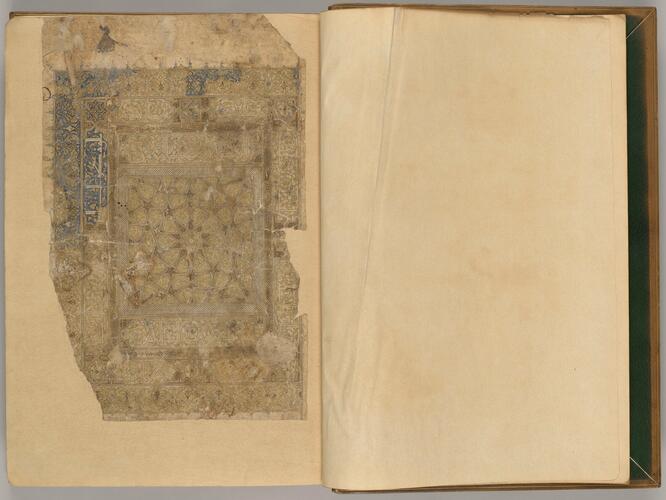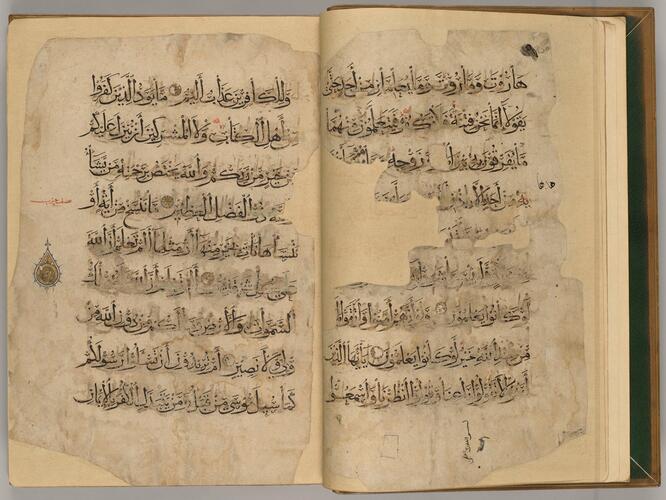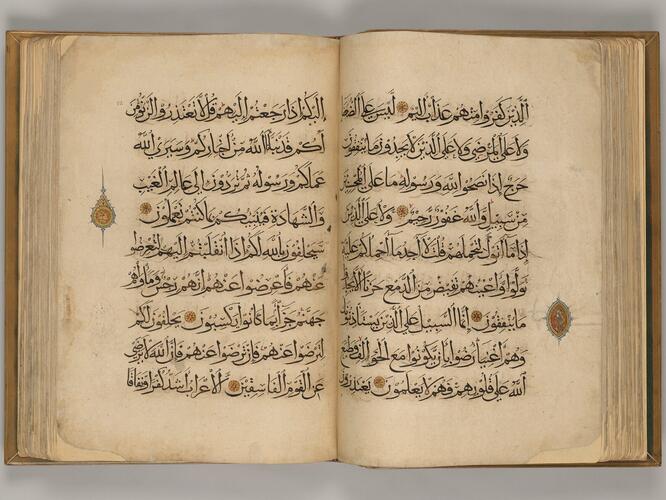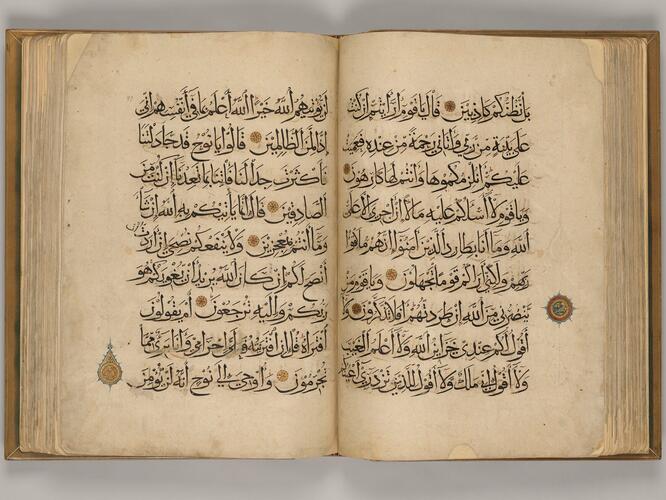-
1 of 253523 objects
al-Quran القرآن (The Quran) 15th century
234 + 2 folios. Illuminated and decorated manuscript on paper. | 52.5 x 37.0 cm (book measurement (conservation)) | RCIN 1005000

al-Quran القرآن (The Quran) 15th century

al-Quran القرآن (The Quran) 15th century

al-Quran القرآن (The Quran) 15th century

al-Quran القرآن (The Quran) 15th century






















-
The Quran is the sacred text of Islam. According to Muslim belief it is the Word of God as revealed to the Prophet Muhammad by the Archangel Gabriel in verses of Arabic poetry.
This large, illuminated volume of the Quran was produced in North Africa during the late Mamluk period (c. 1400–1500). It is written in superb Arabic calligraphy, the text predominantly in muhaqqaq script apart from the illuminated opening phrases of each of surah (chapter) written in thuluth. The ends of the verses are separated by small illuminated medallions in gold and blue, and larger illuminated medallions are found in the page margins every five verses. The manuscript is incomplete containing only the first 43 surahs.
The manuscript does not bear any signatures or dedications detailing the calligrapher nor the patron. It is likely that the manuscript remained in North Africa during the period of Ottoman rule until it came into the possession of Abdullah al-Taashi (1846–99), who led the Mahdist forces against Ottoman rule in the Sudan as the Khalifah (‘successor’) of Muhammad Ahmad (1844–85), the Mahdi (‘Rightly-Guided One’).
General Kitchener (1850 – 1916), then Sirdar (Commander-in-Chief) of the Egyptian Army, acquired the manuscript after defeating the Khalifah and his forces at the Battle of Omdurman (2 September 1898) and later presented it to Queen Victoria.
The manuscript was re-bound by Eyre and Spottiswoode, the Queen’s stationers, in green morocco with two folios of a later 18th or 19th century North African manuscript, containing parts of surahs 21 and 38, bound in at the end.Provenance
Formerly owned by Abdullah al-Taashi, the Khalifa (successor) of the Mahdi of Sudan, Muhammad Ahmad (1844-85). Acquired after the Battle of Omdurman (2 September 1898) by General Kitchener and later presented to Queen Victoria.
-
Medium and techniques
234 + 2 folios. Illuminated and decorated manuscript on paper.
Measurements
52.5 x 37.0 cm (book measurement (conservation))
Category
Alternative title(s)
Quran
Place of Production
Egypt